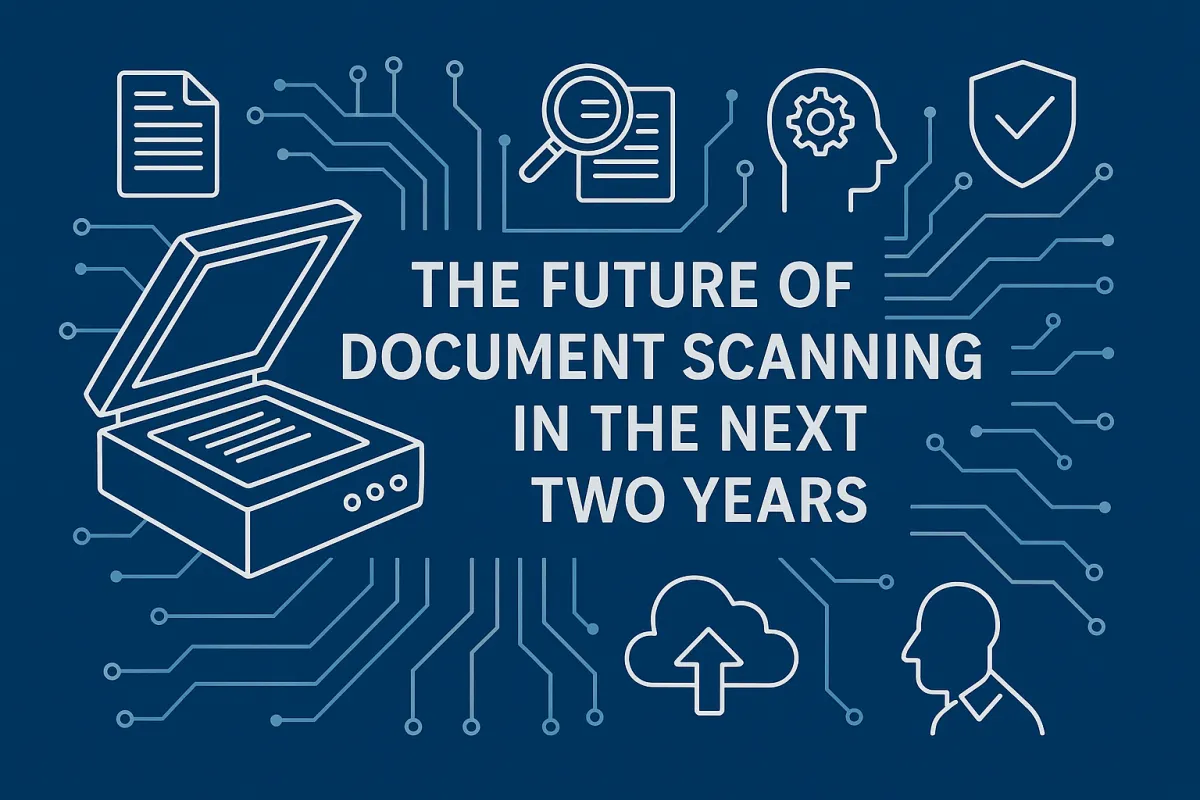
The Future of Document Scanning in the Next Two Years: Technology, Process, and the Role of Human Expertise
By: USA IMAGING, Inc.
Introduction
Document scanning is evolving at a rapid pace, but unlike some industries where automation replaces people almost entirely, scanning and digitization still depend on a balance of cutting-edge technology and human expertise. The next two years will bring meaningful advancements—not just in speed and automation—but also in how scanned documents are processed, secured, and integrated into business workflows.
At USA Imaging, Inc., we constantly evaluate where the industry is heading, and the short-term horizon (2025–2027) is especially important. Businesses planning digital transformation projects today need to understand what to expect in the very near future.
Technology: Faster, Smarter, and More Accurate
AI-Powered Document Recognition
Artificial Intelligence (AI) is already playing a role in OCR (Optical Character Recognition), but in the next two years, expect major leaps in how accurately software can detect handwriting, faded ink, and irregular formatting. This will reduce the time needed for manual correction while improving confidence in search-ready digital files.Automation in Document Separation and Indexing
Future scanning software will use AI-driven algorithms to automatically recognize document types, separate multi-document batches, and assign index fields with minimal human input. For example, invoices may be identified by vendor names or logos, while HR files might be separated by employee names.Improved Hardware Capabilities
Scanner manufacturers are focusing on higher throughput with more compact footprints. Expect devices capable of handling mixed-size batches (receipts, contracts, oversized pages) with fewer jams and interruptions, reducing the need for re-scans.Cloud-First Integration
Businesses will increasingly expect documents to move seamlessly from scanners into secure cloud platforms. Within two years, direct integrations with platforms like Microsoft 365, Google Workspace, and industry-specific repositories will become the norm.
Process: Efficiency Meets Security
Streamlined Workflows
Instead of relying on disconnected steps—prep, scan, OCR, quality control—systems will increasingly merge processes into unified workflows. This reduces lag time, but businesses still need trained teams to ensure documents are properly prepped and indexed.Enhanced Security Measures
As cyber threats increase, scanned document workflows will place more emphasis on encryption, controlled access, and audit trails. Security will not just be about the digital files but also about how physical documents are transported, stored, and eventually destroyed.Hybrid Models for Mixed Environments
Many businesses will continue to operate in “hybrid” formats: part paper, part digital. The process of scanning will remain essential to bridge that gap, ensuring historical records and ongoing paperwork are equally accessible.
The Role of Manual Interaction: Still Critical
While technology will continue to advance, human interaction will remain an irreplaceable part of the scanning process in the short-term future. Here’s why:
Document Preparation
Staples, sticky notes, torn edges, and fragile paper cannot be resolved by software alone. Human hands are still required to prepare documents for smooth, accurate scans.Quality Control
Even the most advanced OCR systems will occasionally misread characters or misalign pages. Skilled staff are needed to ensure the final digital product is reliable.Indexing Judgment
AI can guess where a field belongs, but context matters. A human expert is better at understanding when two similar documents need to be indexed differently or when subtle differences matter.Client-Specific Needs
Every organization has unique requirements—legal formatting, compliance standards, naming conventions—that require oversight from professionals who understand both the client’s industry and the scanning process.
What This Means for Businesses Planning Scanning Projects
Over the next two years, businesses can expect more reliable, faster, and secure scanning options. But it’s not about “machines replacing people.” Instead, technology will enhance human capabilities, reducing repetitive tasks while allowing experts to focus on higher-level quality and compliance.
Companies that act now—digitizing their records instead of waiting—will benefit from both today’s proven methods and tomorrow’s enhancements. Partnering with an experienced provider like USA Imaging, Inc. ensures that your project isn’t just about running paper through a scanner but about creating an accessible, secure, and future-ready digital archive.
Conclusion
In the next two years, document scanning will continue to evolve with smarter software, faster equipment, and stronger security. Yet, the human element will remain essential—especially in preparation, quality control, and compliance oversight. Businesses that embrace both technology and expertise will gain the most: faster workflows, lower costs, and digital archives they can trust.
